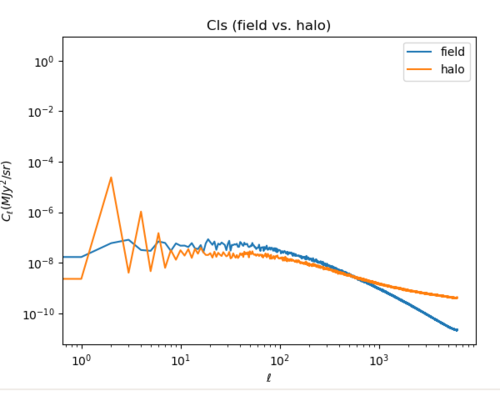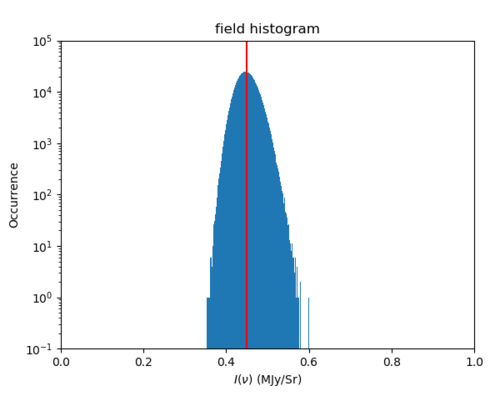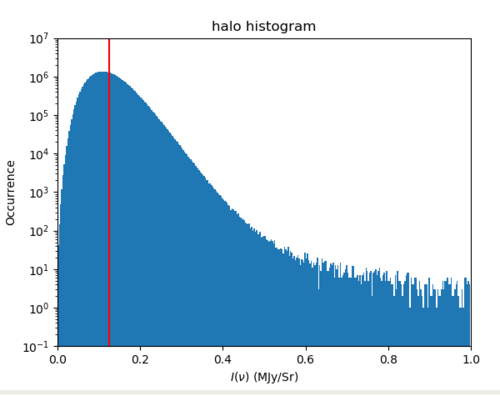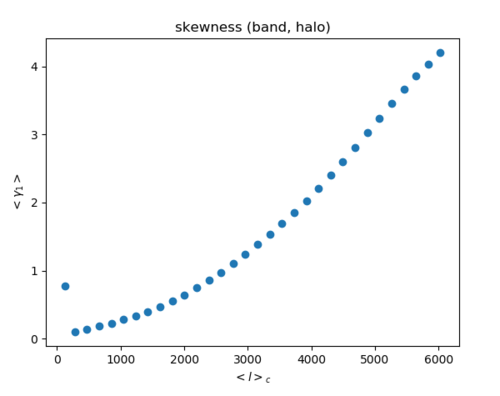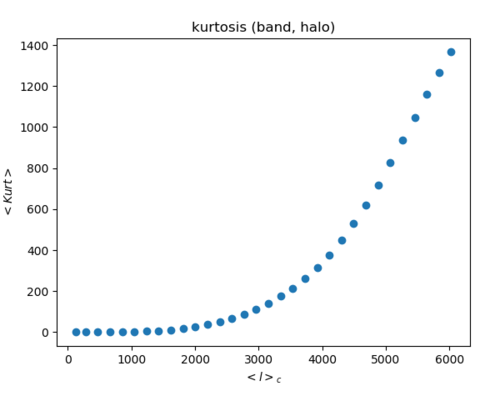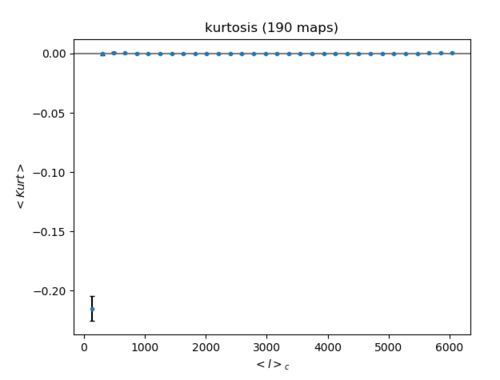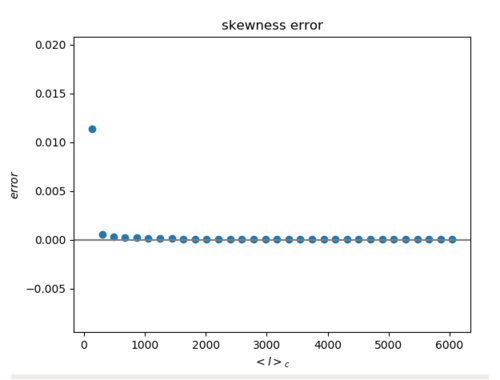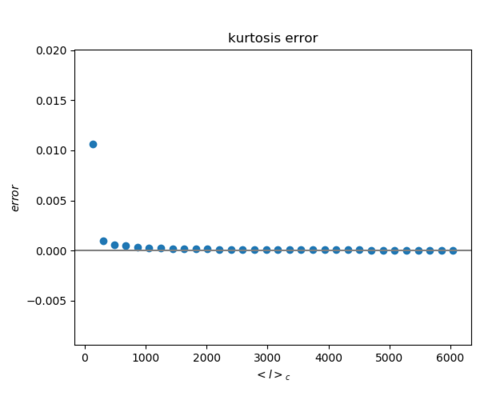March 1, 2019 - Halo maps analysis (in progress)
I did some preliminary analysis using the total CIB halo map George sent me. As discussed, the higher order statistics of the halo map is vastly different from the field.
1. Power spectra (field vs. halo)
The power spectrum of the halo seems more flat compared to the field.
2. Total map statistics:
| Statistics | |||||
|---|---|---|---|---|---|
| field | halo | ||||
| Mean | 0.4500151481046603 | 0.1256358205880366 | |||
| Variance | 0.0005644309091081682 | 0.00229961971779621 | |||
| Skewness | 0.24568343607015708 | 7.889138442743544 | |||
| Kurtosis | 0.1278061760452549 | 3244.4918872011885 | |||
While the mean and variance differ by about 4~5 times, the skewness and kurtosis for the halo map are huge.
3. Histograms
As expected, the field and halo intensity distributions by pixel are vastly different. For the halo map, there is a cut-off at an intensity of 10^(-4) MJy/sr, meaning that any values smaller than this was not taken into account. I also do not quite understand why the occurrence scales are so different from each other when both the field and halo maps have 50331648 pixels (it could be because of the binning, which was defined by 10000 linear bins).
4. Band filtering of the halo map (Left: skewness Right: kurtosis)
The skewness is on the order of 100 times the field, while the kurtosis is on the order of 1000~10000 times the field. At an ell>3000, the skewness does seem to follow a Poisson trend.
5. Band filtering of Gaussian maps with the same power spectra as the halo map (Left: skewness Right: kurtosis)
The skewness and kurtosis for Gaussian maps are nearly zero, and now there is a huge difference between the skewness/kurtosis of the halo-CIB and Gaussian realization.
6. Error of Gaussian halo maps' band filtering (Left: skewness Right: kurtosis)
I have not fitted these yet, but they seem to follow an inversely proportional trend with ell (as before).
